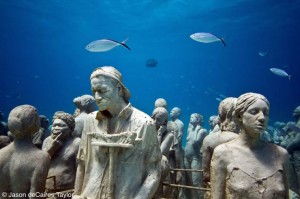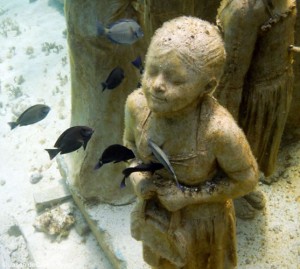
Could coral reef conservation and tourism give new life to sustainable tourism? Estimates suggest that the total global value of coral reef-based recreation and tourism is at $9.6 billion. Preserving coral reefs with sustainable tourism is essential to maintaining financial growth in those parts of the world that rely on marine tourism.
In the United States, an economic contribution of $364 million is annually added to the economy of Hawaii because of coral reef recreation. Nearly $1 billion in gross revenue is contributed to Hawaii because of coral reef recreation that the island offers to visitors. In South East Asia, where health coral reef thrive, there is potential net worth benefit of $23,100 to $270,000 from coral reef-based recreation. These figures are evidence that certain parts of the world simply can’t afford to lose the revenue generated from coral reef recreation.
Forty percent of the world’s natural coral reefs have already been destroyed and scientists estimate that eighty percent will be permanently destroyed by 2050. Who is working to protect these precious underwater ecosystems that attract visitors from around the world and stimulate local economies?
The Coral Reef Alliance (CORAL) is an international nonprofit organization that works with communities and local partners to improve the health and resiliency of coral reefs. CORAL establishes relationships with local community members, governments and marine recreation managers to ensure that human activity around coral reefs is as harmless as possible.
Rick MacPherson, Director of Conservation Programs at CORAL, told WaterWideWeb, “As coral reef tourism grows, more people migrate to these ecologically sensitive areas in order to take part in the booming economic potential.” Hotels, restaurants, and residential developments compromise the coral environments as more people come in contact with the reefs.
If the reefs continually decline, tourist dollars that boost local economies in these areas will decline as well. “The economic foundation for many countries, including the U.S., is being jeopardized”, said MacPherson.
Cancun Marine Park is one of the world’s most visited bodies of water. Annually, 750,000 tourists flock to Cancun Marine Park. The park’s fragile coral systems are damaged by visitors. The reefs are at risk. When divers and snorkelers come in contact with the reef, they deteriorate quicker. In order to boost reef resiliency, specialists need to reduce reef risks imposed by divers and snorkelers.
Jason deCaires Taylor, Founder and Artistic Director of Museo Subacuatico del Arte (MUSA) hopes to relieve the stress on the delicate coral reefs in Cancun, Mexico. MUSA is an underwater sculpture museum located in waters around Cancun, Isla Mujeres and Punta Nizco, Mexico. MUSA is an ambitious endeavor to fuse art and environmental conservation with an underwater sculpture exhibit.
The project was founded by Jaime Gonzalez Cano of The National Marine Park, Roberto Diaz of The Cancun Nautical Association and Taylor. Taylor has partnered with marine biologists, scientists and park officials to ensure that materials used for MUSA’s underwater sculptures are safe and sustainable.
The MUSA exhibits will showcase an installation of over 400 sculptures made with cement, sand, micro fiber glass and live coral. One exhibit, Silent Evolution, show’s man’s interaction and dependence on nature for survival. Sculptures in the exhibit are designed in the shape of people from various walks of life. Each sculpture was made to depict the struggle of all human beings to understand their reliance on nature.
The purpose of Silent Evolution is to engage tourists in sustainable tourism, a cultural alternative to other venues in Cancun. If tourists flock to Taylor’s extensive MUSA exhibit, the natural coral reefs in Cancun National Marine Park will have time to regenerate and grow.
Thus far, Taylor’s efforts have been successful. Taylor told WaterWideWeb, “Recently the Silent Evolution has attracted 11 large grey angel fish which had not been seen on the local reefs for a couple years “.
Projects like Taylor’s offer a two-fold benefit to sustainable tourism. The natural environment of corals will be recovered while newer environments attract marine life that has since fled the area due to stress on the environment.
Taylor noted coral growth on sculptures in his exhibit since the start of the project in January of 2009. “Some of the corals on The Gardener sculpture have grown by over two inches in six months which is phenomenal by hard coral standards”.
Crowded coastlines and stress on the fragile ecosystems of coral reefs has cost the world beautiful underwater landscapes that may never regenerate if immediate action isn’t taken to restore them. Sustainable tourism will ensure that the $9.6 billion in reef tourism continues to flow into local economies in places like the United States, the Caribbean and South East Asia.
So next time you pack your suitcase, will it be a sustainable trip that you embark on?




Your Comments
2 Comments so far